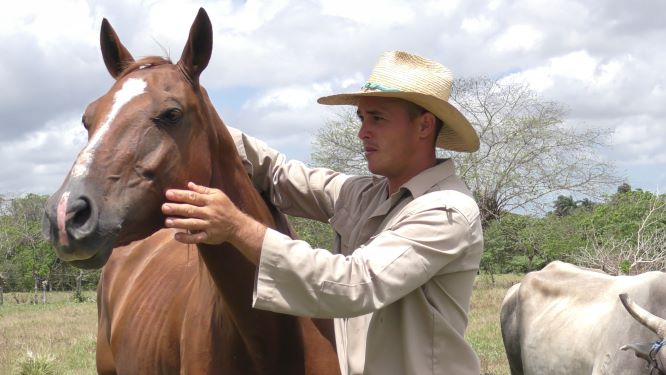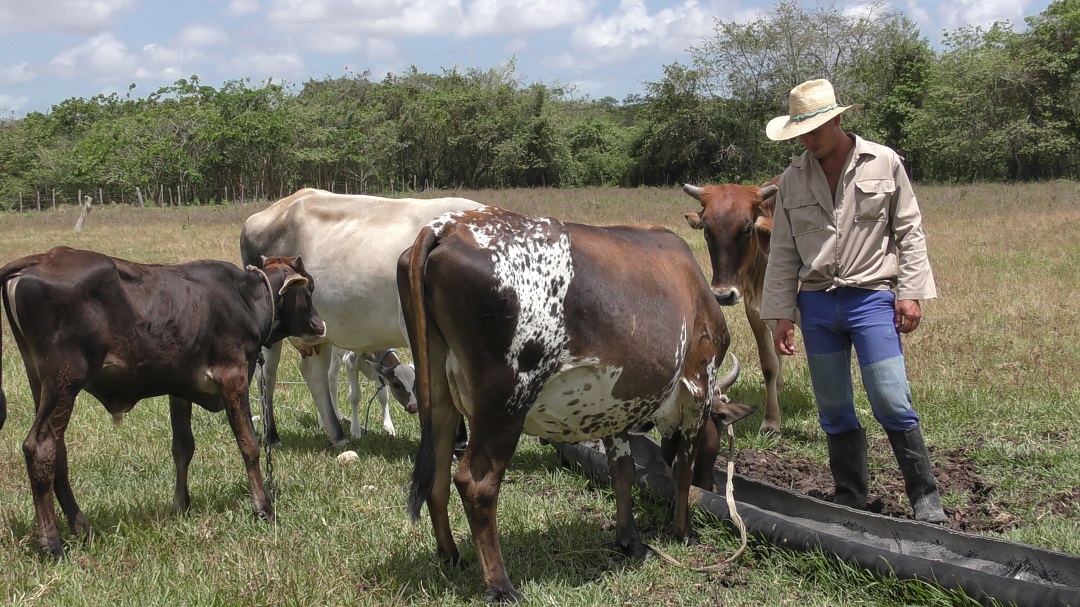The cows do not give milk, you have to milk them, and for that you have to get up at dawn, go to the fields, walk through paddocks and pens full of excrement, tie the tails and legs of the animals, sit on the stool, place the bucket and make the appropriate movements for milking.
"You have to work to obtain milk," Javier Álvarez Rodríguez says, worker of La Panchita cattle farm, belonging to the Manuel Montaña Credit and Services Cooperative (CCS) and located on the slopes of the Rincón de Mabuya elevations, in the municipality of Chambas, where they have spent their 27 years, always linked to agricultural activities.
The vocation for the land and the animals is not by chance, nor is the decision to become a Mid-Level Veterinary Technician to appropriate theoretical and practical knowledge that allows him to perfect his work in a property that became a family heirloom, passing from his great-grandfather to his father.
The knowledge acquired since childhood in paddocks and furrows, plus the contributions of the academy enable him to conduct himself successfully to preserve a tradition and feel fulfilled because "the countryside is what I like", he sums up in a few words.
Along with his father, in little more than six hectares, Javier develops livestock―currently with 27 animals―and various crops such as grains, root vegetables and sugar cane, meanwhile, he plans to incorporate king grass, the last two for guarantee the feeding of cattle in an area of prolonged drought.
The pretensions of increasing the livestock mass to exceed the daily delivery of 16 liters of milk implied the disbursement of 11 thousand pesos for the construction of a well that ensures the availability of water; however, other deficiencies exceed their possibilities.
For seven months they have been waiting for the requested buckets and canteens, even waiting for orders from previous years, and it is difficult for him to understand the reasons why on this island, bathed by the sea, producers like him do not have salt to incorporate it into the nutrition of the animals.
However, he must manage so that his five producers yield the amount planned by someone who, he presumes, "has never stooped down to milk" and draws plans in correspondence with the number of animals, without evaluating conditions or considering the milking cows.
After collecting it, they must face other setbacks – literally setbacks – when moving very early along a narrow and irregular road, about two kilometers long, to take the milk to the collection point near the Northern Circuit.
When it rains, it gets extremely difficult, so he and the nearby neighbors have to juggle so that the children arrive with their uniforms and clean shoes to school.
Rincón de Mabuya requires more attention, is the main claim of Álvarez Rodríguez, on behalf of the local families, mostly linked to the production of food that pays taxes to the Food Sovereignty and Nutritional Education, and Municipal Self-sufficiency programs.
Although disgust appears, he is not invaded by demotivation. His attitude confirms this: under an intense sun, he provides water to the animals, caresses them while they drink and resumes the dialogue about his farm, converted into a replica of the international project Connecting Landscapes.
The association with his neighbor Osveldo Gómez Reina―recognized as a professor of Agronomy at the Municipal University Center of Chambas and owner of one of the six school farms with a landscape focus in the country―allows him to extend agro-ecological practices in the area.
Shortly before the interview, more than 350 meters of living fences had been completed that will protect the soil and favor the growth of grasses by regulating the temperature and humidity in the area.
Using organic fertilizers, including cattle manure, they develop crops such as corn and beans, achieving adequate health in the plantations and yields that allow the family to self-supply and contribute to social consumption, although the commitment is with the delivery of milk.
He plans to join the pig program by taking advantage of the potential of a grove located on his property, where the Creole pig would have facilities for growth, with the help of natural foods (fruits and palm nuts).
At the foot of the Bamburanao mountain range, from a valley that turns green with the arrival of spring, Javier "cultivates" the present and projects his future, which is that of his family and a country where food production is a priority, therefore, It requires all your efforts, but also support.







